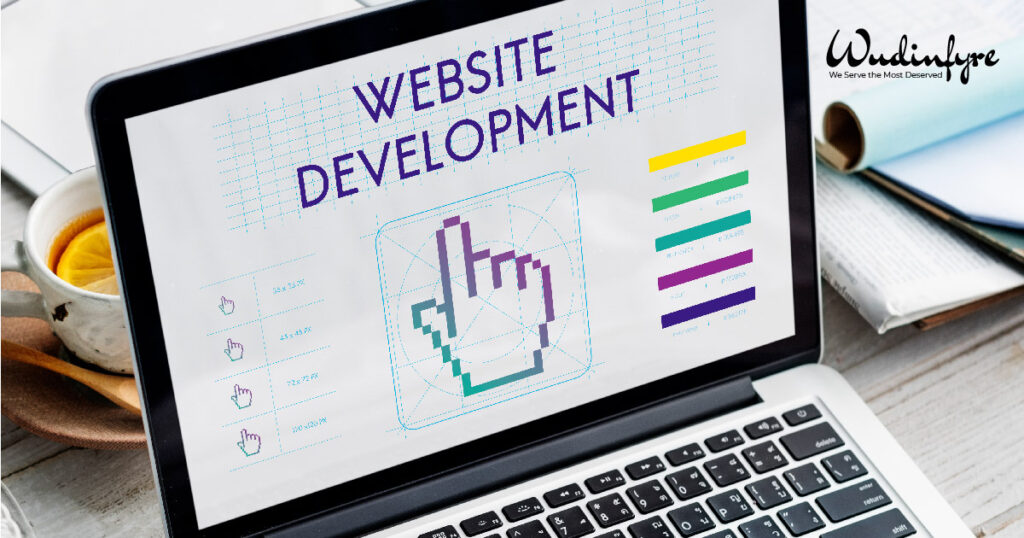If you are planning to build a website, one of the most important decisions you have to make is which website development framework to use. A website development framework is a set of tools, libraries, and standards that help you create and maintain a website. It provides you with a structure and a codebase that you can reuse and customize for your specific needs.
But how do you choose the right website development framework for your brand in Dubai? What are the benefits of choosing the perfect development framework for your project? And what things you should consider when making your choice?
In this blog, we will answer these questions and a lot more. We will also compare some of the most popular website development frameworks and their features, and give you a step-by-step guide to help you choose the right website development framework for your project.
Table of Contents:
- Inroduction
- Understanding the Importance of Choosing the Right Website Development Framework
- Overview of What a Website Development Framework Is
- Types of Website Development Frameworks
- Front-end vs. Back-end Frameworks
- Examples of Full-Stack, Front-end, and Back-end Frameworks
- Benefits of Choosing the Right Framework
- Faster Development
- Easier Maintenance
- Better Performance
- Higher Security
- Enhanced User Experience
- Factors to Consider When Choosing a Framework
- Project Requirements
- Learning Curve
- Popularity
- Scalability
- Compatibility
- Popular Website Development Frameworks
- React
- Angular
- Bootstrap
- Tailwind CSS
- Django
- Ruby on Rails
- Laravel
- Meteor
- Flask
- Express
- Spring Boot
- ASP.NET Core
- Comparing Frameworks
- Type
- Language
- Popularity
- Learning Curve
- Scalability
- Compatibility
- Performance
- Step-by-Step Guide to Choosing the Right Framework
- Define Your Project Requirements
- Research Your Options
- Test Your Options
- Choose Your Option
- Conclusion
- The Impact of Framework Choice on Your Project
- How Wudinfyre Can Help You Choose and Customize the Right Framework
Understanding Website Development Frameworks
Before we dive into the details of choosing the right website development framework, let’s first understand what a website development framework is and why it is useful.
A website development framework is a software platform that provides you with a set of tools, libraries, and standards that help you create and maintain a website. It simplifies and streamlines the web development process by providing you with common functionalities, such as authentication, database access, templating, routing, testing, and security. It also enforces best practices and coding conventions that make your code more readable, maintainable, and scalable.
A website development framework can be classified into two types: front-end and back-end. A front-end framework deals with the user interface (UI) of the website, such as HTML, CSS, and JavaScript. It helps you design and implement the layout, appearance, and interactivity of the website. A back-end framework deals with the server-side logic of the website, such as PHP, Python, Ruby, or Java. It helps you handle the data processing, business logic, and communication with external services of the website.
Some frameworks are full-stack, meaning they provide both front-end and back-end functionalities. Here are a few examples of full-stack frameworks Django (Python), Ruby on Rails (Ruby), Laravel (PHP), and Meteor (JavaScript).
Some frameworks are specialized for either front-end or back-end development. A few examples of front-end frameworks are React (JavaScript), Angular (JavaScript), Bootstrap (CSS), and Tailwind (CSS). Some examples of back-end frameworks are Flask (Python), Express (JavaScript), Spring Boot (Java), and ASP.NET Core (C#).
Benefits of Choosing the Right Website Development Framework
Choosing the right website development framework for your project can have many benefits for both you and your website. The following are some benefits:
- Faster Development: A website development framework can help you speed up the development process by furnishing you with ready-made components, templates, and libraries that you can use to build your website.
There is no need to reinvent the wheel or create everything from scratch. You can focus on the core features and functionalities of your website instead of spending time on boilerplate code.
- Easier Maintenance: A website development framework can help you make your code more organized, modular, and consistent by following a predefined structure and convention.
This makes your code easier to read, understand, debug, and update. You can also benefit from the documentation, community support, and updates provided by the framework developers.
- Better Performance: A website development framework can help you optimize the performance of your website by using efficient algorithms, caching mechanisms, compression techniques, and other best practices.
You can also leverage the power of modern web technologies, such as HTML5, CSS3, JavaScript ES6+, WebAssembly, WebSockets, etc., that are supported by the framework.
- Higher Security: A website development framework can help you enhance the security of your website by providing you with built-in features, such as encryption, hashing, validation, sanitization, CSRF protection, XSS prevention, etc., that protect your website from common web attacks.
You can also follow the security guidelines and recommendations provided by the framework developers.
- Better User Experience: A website development framework can help you improve the user experience of your website by providing you with responsive design tools, animations, transitions, interactions, and other UI elements that make your website more attractive, engaging, and user-friendly.
You can also use progressive web app (PWA) features, such as offline access, push notifications, and home screen icons, that make your website more native-like.
Things to Assess When Choosing a Website Development Framework
- Project Requirements: The first factor that you have to consider is what are the requirements of your project.
What is the purpose, scope, and goal of your website? What are the features and functionalities that you want to implement? What are the technical specifications and constraints that you have to follow? You have to choose a website development framework that can meet your project requirements and expectations. - Learning Curve: The second factor that you have to consider is how easy or difficult it is to learn and use the website development framework. How familiar are you with the programming language, syntax, and concepts of the framework?
How much time and effort do you have to invest in learning and mastering the framework? How well-documented, supported, and updated is the framework? You have to choose a website development framework that matches your skill level and availability.
- Popularity: The third factor that you have to consider is how popular and widely used is the website development framework. How many developers, websites, and companies are using the framework? How engaged and supportive is the community surrounding the framework? How many resources, tutorials, courses, books, blogs, podcasts, etc., are available for the framework? You have to choose a website development framework that has a strong and vibrant ecosystem that can help you grow and succeed.
- Scalability: The fourth factor that you have to consider is how scalable and adaptable is the website development framework. How well can the framework handle the increasing complexity, traffic, and data of your website?
How easy or hard is it to add new features, functionalities, and integrations to your website? How flexible and customizable is the framework to suit your specific needs? You have to choose a website development frameworks that can scale and evolve with your website.
- Compatibility: The fifth factor that you have to consider is how compatible and interoperable is the website development framework.
How well can the framework work with other frameworks, libraries, tools, services, platforms, browsers, devices, etc., that you want to use for your website? How easy or hard is it to migrate or switch from one framework to another if needed? You have to choose a website development framework that can integrate and collaborate with other technologies that you use or plan to use.
Popular Website Development Frameworks and Their Features
Now that you know what factors to consider when choosing a website development framework, let’s take a look at some of the most popular website development frameworks and their features.
We will compare them based on their type (front-end or back-end), language (programming language they use), popularity (number of stars on GitHub), learning curve (difficulty level of learning and using them), scalability (ability to handle large-scale websites), compatibility (ability to work with other technologies), and performance (speed and efficiency of rendering websites).
| Framework | Type | Language | Popularity | Learning Curve | Scalability | Compatibility | Performance |
|---|---|---|---|---|---|---|---|
| React | Front-end | JavaScript | 176K stars | Moderate | High | High | High |
| Angular | Front-end | JavaScript/TypeScript | 75.5K stars | High | High | High | High |
| Bootstrap | Front-end | CSS/JavaScript | 152K stars | Easy | Low | High | Low |
| Tailwind CSS | Front-end | CSS/JavaScript | 45.9K stars | Easy/Moderate | Low/High | High | Low/High |
| Django | Full-stack/Back-end | Python | 58.6K stars | Moderate/High | High | High | High |
| Ruby on Rails | Full-stack/Back-end | Ruby | 49.1K stars | Moderate/High | High | High | High |
| Laravel | Full-stack/Back-end | PHP | 65.8K stars | Moderate | High | High | High |
| Meteor | Full-stack/Back-end | JavaScript | 42.7K stars | Moderate/High | High | High | High |
| Flask | Back-end | Python | 55.9K stars | Easy/Moderate | Low/High | High | Low/High |
| Express | Back-end | JavaScript | 53.6K stars | Easy/Moderate | Low/High | High | Low/High |
| Spring Boot | Back-end | Java | 51.5K stars | Moderate/High | High | High | High |
| ASP.NET Core | Back-end | C#/.NET | 25.3K stars | Moderate/High | High | High | High |
Step-by-Step Guide to Choose the Right Website Development Framework
Now that you have seen some case studies of framework selection for different types of websites, let’s summarize the steps that you can follow to choose the right website development framework for your project:
- Define your project requirements: The first step is to define your project requirements clearly and comprehensively. You have to identify the purpose, scope, and goal of your website. You have to list the features and functionalities that you want to implement. You have to specify the technical specifications and constraints that you have to follow.
- Research your options: The second step is to research your options thoroughly and objectively. You have to explore and compare different website development frameworks based on their type, language, popularity, learning curve, scalability, compatibility, performance, and other relevant factors.
You have to use online tools, resources, reviews, ratings, testimonials, etc., to find and evaluate different website development frameworks. - Test your options: The third step is to test your options practically and empirically. You have to create prototypes or mockups of your website using different website development frameworks. You have to measure and analyze the results based on various metrics, such as speed, efficiency, reliability, usability, security, etc.
You have to test your options on various platforms, browsers, devices, etc., to check their compatibility and interoperability. You have to test your options with real users and get their feedback and suggestions. - Choose your option: The final step is to choose your option rationally and confidently. You have to weigh the pros and cons of each option and compare them with your project requirements and expectations. You have to choose the option that best suits your needs and preferences. You have to choose the option that you are comfortable and confident with.
Conclusion
The website development framework that you choose can have a significant impact on the success and satisfaction of your project. It can also affect the time, cost, and quality of your website development process.
Therefore, you have to choose the right website development framework carefully and wisely. You have to follow a systematic and logical approach that involves defining your project requirements, researching, testing, and choosing your options.
If you are still unsure or confused about which website development framework to choose for your project, don’t worry. We are here to help you. At Wudinfyre, we are a team of Best web developers in Dubai, who can help you create stunning and professional websites using the best website development frameworks. We can help you with every aspect of your website development process, from planning and designing to developing and deploying.
Whether you want to create an e-commerce website, a social media website, a blogging website, or any other type of website, we can help you choose the right website development framework for your project. We can also help you customize and optimize your website according to your needs and preferences.
Contact us today and let us help you choose the right website development framework for your project.



